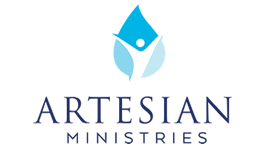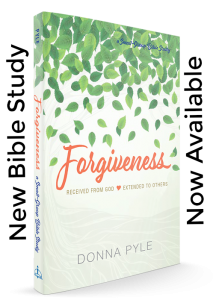When it comes to Bible study, I admit that it used to scare my freckles white. As a new Christian 25 years ago, my Bible’s table of contents was a lifeline to find my way around Scripture.
How do you view Bible study? Frustrating, fulfilling or downright frightening?
Much like a car’s GPS, effective Bible study tools often spare us the discomfort of getting lost in Scripture.
Because who likes getting lost?
Study Bibles and other resources are helpful tools, but when it comes to studying God’s Word for personal growth (rather than preparing to speak or teach from it), I’d like to suggest a method from personal experience that works well:
(1) Shelve your study Bible.
Don’t discard it, just shelve it initially. Get a Bible that contains only Scripture cross-references. Look up the cross-references to help you interpret and navigate through Scripture. Comparing Scripture with Scripture lets the Bible explain itself, allowing God’s context to speak.
Treat study Bible notes as what they are: commentary, and a brief one at that. Remember they are man’s words, subject to bias and error. Read them respectfully but critically.
(2) Take your time.
Ask God for insight as you begin studying His Word. Humbly ask God to reveal truth to your heart and mind as you read for understanding on your own. Ask again as you compare your discoveries to those of trusted commentators.
Even if you discover that you may have drawn an inaccurate conclusion from a passage, your diligence to discover the correct interpretation will cause you to remember more readily.
This journey is vitally necessary for spiritual growth.
(3) Consult multiple sources.
Study notes serve as a starting point, not a terminus. Once you have read the passages for personal understanding in a note-free Bible, consult several study Bibles and commentaries from trusted sources. Look for consensus and disagreement among them.
And keep those prayer lines open with God as you go.
There are many resources, so where do we start? Here are some of my indispensable research mainstays:
The Lutheran Study Bible by Concordia Publishing House
Logos Bible Software
www.blueletterbible.com
ESV Bible Atlas
The New Strong’s Expanded and Exhaustive Concordance
Vine’s Complete Expository Dictionary of Old and New Testament Words
NIV Archaeological Study Bible: An Illustrated Walk Through Biblical History and Culture
There are others, but I usually use the above resources each time regardless. Just remember, those study tools serve as a reference point for your conclusions, but not as a substitute for them.
And don’t be afraid to get a little lost in Scripture.
Allow yourself to feel the extent of what you don’t understand. It’s a humbling feeling.
If wisdom and understanding define your destination, humility makes an excellent starting point for the journey.
After all, God faithfully promises: “You will seek me and find me when you seek me with all your heart.” Jeremiah 29:13
How do you view and/or approach Bible study?
Comment below and let’s learn from each other’s tips and study methods. We’re on this journey together!
FREE DOWNLOADS:
Here are four different Bible Reading Checklists to choose from. Tuck one (or all) neatly in your Bible for marking your study journey. Please feel free to share them.



I really love the advice to set the Study Bible aside. I hadn’t thought about how it felt when I was a young adult and excited to study the Word and there was so much on a page. I have my go-to old-school ESV Bible app, which is my favorite way to just read Scripture without distractions. I always recommend the audio function on the a Bible app for people intimidated by reading chunks of Scripture. All the names are mispronounced for you, so you don’t have to do it on your own! 😉
I was also just looking for some new resources! Thanks for the recommendations, Donna.
I didn’t know there was an old-school ESV Bible study app! Now I’m hunting for it. I use the audio function through YouVersion — you’re right, audio is a great tool. I can listen to it in the car no matter where I am or how long I have. Thanks for chiming in, Heidi!
Those are great tips. I had become accustomed to relying on study notes and then I did a Precepts course on Luke. A commentary was the last thing we looked at each week. So the focus was on the Word (who, where, when, etc. ) And it was both humbling and exciting to dig in and use word study (with Strongs) and context and cross references. Your resources and narrative are excellent advice. Especially the “begin and continue in prayer” part. Key!!!! Thanks, Donna!
Thanks for that affirmation, Eden. It’s vital to let God speak to us through His Word before we put anything else on top of it!
I love Bible Study – so much that I would love to spend whole days “eating” God’s Word according to Jeremiah (15:13). I cut my teeth on Bible Study with Kay Arthur’s Inductive Bible Study. Commentaries were secondary after a careful time of observing and pouring over scripture. Then, came interpretation and application. Kay gave me the tools. Later, I would copy a chapter or book of scripture and paste it into my Word program, double spaced and then mark it up good! A reason for colored pencils! Yes! Information became personal transformation – the whole process is really beautiful. I especially enjoy doing word studies which help with digging out those nuggets of truth! I use the Accordance Bible software (for Mac computers). This helps to shape and form personal study and writing Bible Studies and retreats for others. Sometimes, I decide to spend 6 months in one book of the Bible with little or no use of commentaries and such. This takes discipline for me as I love my Lutheran Study Bible and consult the notes regularly. But, the notes aren’t inspired and the Holy Spirit turns me toward scripture alone once again. When a verse or a few several verses stop me as they are targeting my heart, I will practice Lectio Divina (Divine or Prayerful Reading). This ancient practice really slo-o-o-ws me down to be nourished by God’s Word. Lectio includes a first reading, followed by reflection and meditation (ruminating!). Then a second and third reading. Usually a prayer follows using the scripture I have read. After resting with the scripture, I am ready to study once again! Over the years, this practice has deepened my love for the Lord. I am still learning, though, and greatly love learning and sitting at the feet of trusted teachers and other sojourners along the way.
Lisa, this is amazing! Your love for Scripture just weaves throughout your comment. How beautiful! The way that you approach, process, and study the Word is inspiring and so necessary. Thank you SO MUCH for sharing this, fellow sojourner.